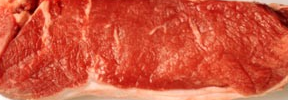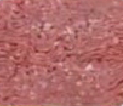Welcome to the first post at The Natural Inquirer. My science post.
We've been sticking a lot into our food, more as technology races along and ancient customs are rediscovered. For some, it is hard to tell if the pros outweigh the cons. For some it is clear.
Over the last few decades, a new additive for fresh meat is Carbon Monoxide. Carbon Monixed is well known for it's ability to impede breathing, causing death. Why would you want to put it in your meat? Where is this Carbon Monoxide treated meat so I can avoid it? Just how dangerous is it in your meat? It must be dangerous or they wouldn't have banned it in the European Union, right?
Those are the questions, now for the answers.
I'll start with Where is this treated meat so I can avoid it? That is not an easy question to answer. Can't I just look at the label? No. Because it is considered GRAS (Generally Recognized As Safe), it does not need to be on food labels. It is, after all, just an element of the atmosphere. The best way to find out is ask the person who handles your meat at the store. Shy or can't find a live human to talk to (or they say they don't know)? Learn what it looks like. I will show you comparison pictures. Another rule of thumb, unless you are buying local meat from a butcher, you are likely buying treated meat. A warning, some stores claim not to sell it, like Wal-Mart, but testing of their meats reveals that they do.


Sorry for the images being for two different types of meat, but it is difficult to find perfect images unless you are taking them yourself.
The image on the left is a Carbon Monoxide treated piece of meat. The meat is bright reddish/pink and the fat is pearly white. Nothing to complain about, right?
The image on the left is freshly ground beef. Notice it is an ugly purplish color. It will quickly turn a deep red then start to brown.
Why would you want to put it in your meat? You don't want to. It does not increase the value of the meat in any way for you as a consumer. Meat packagers might want to and stores might want to. It makes the meat look more appetizing. And it plays on consumer misperception. What misperception is that? That color is a reliable indicator of spoilage. Why this is a misconception will require a little explaining.
This tricky meat coloring does not come from the meat. It comes from the Myoglobin trapped in the meat. The 'red' blood cells. Freshly cut meat hasn't been exposed to Oxygen long enough and is called reduced Myoglobin and looks purplish. Whether it is immediately packaged or left on a shelf for immediate sale, it will eventually bind with oxygen and turn red. It will then be called Oxymyoglobin. Eventually, an electron frees up and a hydrogen atom bonds to it and it becomes Metmyoglobin, which turns it, not surprisingly, brown.
Notice that we do not need to mention the meat at all. The meat has nothing to do with the color.
What about with Carbon Monoxide? Well, the meat is exposed to an Oxygen free environment that has a tiny bit of Carbon Monixed in it. The Carbon Monoxide binds to the Myogoblin turning it a bright pinkish color which is now called Carboxymyogloin. This is not an entirely irreversible process, it just seems so. Carbon Monoxide binds to Myoglobin 210 times stronger than Oxygen. At room temperature, in an oxygen environment (like your kitchen) Carboxymyogloin has a five hour half life, meaning half of it will free up it's Carbon Monoxide every five hours. Can you imagine not being able to use the Oxygen you breath in for five hours? That would suck.
How dangerous is it? It does not appear to be dangerous at all. As a matter of fact, if you grill your meat over charcoal, you release much more Carbon Monoxide than is bound to the blood of your meat. The only other danger is using the color to tell anything about your meat. Color is not a good indicator of freshness, it is not a good indicator of doneness when cooking either. The best way to tell whether meat is done cooking is checking it's internal temperature.
I realized I said something not entirely true. Because many of the bacteria that spoils your meat is aerobic (uses oxygen to metabolize), treating meat with Carbon Monoxide has been shown to slow down spoilage under some conditions. This doesn't exactly make it a good thing to do, but I want to be as correct as possible with my presentation.
So, if it isn't so horrible, what hidden knowledge caused it to banned in the European Union? They warned, "the presence of CO may mask visual evidence of spoilage." So we see that the European Union's ban was not based on science at all, but rather the governing body's perception of consumer misperception. A bandwagon we don't want to jump on.
Who discovered this practice and made war over it? To the best of my knowledge, this has been a cause championed by Kalsec. Is this a consumer protection group? An organics lifestyle promoter? Are they conspiracy theorists? None of the above. They are rivals. They made an additive that does basically the same thing. Because their product is considered an additive instead of GRAS, their use would be required to be put on the label. Ironically, all of their arguments against using Carbon Monoxide treatment in meat is hypocritical as their product has the same effects. They petitioned the FDA to outlaw their only competition and stirred up a media frenzy to outrage those who do not know all the facts.
So what do we know? The practice serves no useful function for consumers. There is no reason for us to find it desirable. The practice does not hurt us in any way, so there is no reason to get worked up over it. Specifically, I would not recommend spending your money to get into this fight. Meat can stay fresh long after untreated meat turns brown. Well handled, clean and refrigerated meat can last five days without turning brown. Un-refrigerated meat can have a single bacteria reproduce to one million bacteria in seven hours, long before the meat has a chance to turn brown.
And now you know.
Powered by Qumana

3 comments:
The only REAL way to tell if meat is good or not beyond smell, and let me tell you---if it IS bad, you WILL KNOW. Even if you know NOTHING about the scent of meat, it will smell like nasty instead of appetizing. Even raw meat will have a scent that will make any red-blooded human drool with hunger -.- --is temperature. Color is a pathetic excuse for lazy people who don't want to take temps. I'm right along with those people sometimes! If you're worried about meat, you need a thermometer, and you need to stick the said meat in the thickest part to the center. If it isn't 165 degrees, KEEP COOKING. Even RARE meat should meet this guideline, or you're asking for trouble.
What could you get from raw meat? Well, beef alone carries nasty things like botchulism -- a nerve toxin that can lead to paralysis or even death. (uh, yuck?)
This is why, especially with things that are ground, you should ensure the temperature reaches it's optimum minimums set forth by the USDA and other organizations to ensure the bacteria is dead dead dead! Any ground flesh product should be 165 or higher, because you increase the surface area of the product, giving nasty germies even more places to reproduce!!
....I went off on a tangent.
Great article. You should make a chart for your myoglobins and explain the path of clinging particles a little better, all those big words in one paragraph is distracting, especially without a proper introduction to myoglobin to begin with.
Love you!
You know I had heard about this on the tv and it literally turned my stomach.
The more I read, the more I think I'll become a vegetarian, but it will take a while for that to happen, I just said it and I'm already craving a juicy burger. I suck! LOL
Haha, Sandra. I tried that vegetarian thing. It's not so bad when you cook all your meals, but eventually that craving comes along.
I considered myself a casual vegetarian. I don't give myself rules. I love vegtables and fruits and will eat them to the exclusion of everything else. But if I get a craving, I wll satisfy it then go back to yummy veggies.
Sam loves veggies too, but she will make meat for every meal if you let her. That messes up my 'casual vegetarian' status because I am too polite to turn down any meal made for me, no matter what it has in it.
Thank you for stopping by and reading what must be very dry and boring stuff.
If you are curious about the facts on any topic, let me know. I actually get a thrill from digging into topics and finding all the details.
Post a Comment